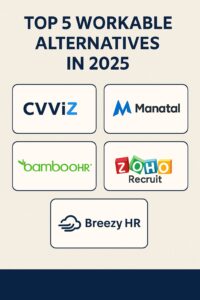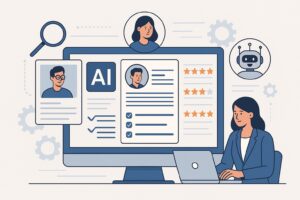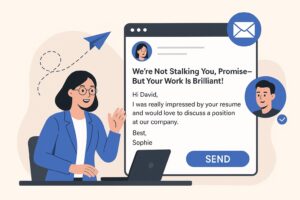Recruitment bias could be holding your company back from its ideal candidate. Whether conscious or unconscious, it’s almost inevitable that human decision-making will create biases in the hiring process. However, the good news is there are now various powerful Artificial Intelligence recruitment tools to reduce and remove these biases, allowing you access to a wider and more diverse talent pool than ever. Let’s take a look at how AI tools are helping recruiters overcome hiring bias.
Common Types of Recruitment Bias
Studies suggest up to 90% of job candidates feel recruiters show some sort of bias in their hiring decisions
1. Indeed, recruiters themselves agree, with more than 19 out of 20 recruiters believing unconscious bias affects the recruitment process, and more than a third identifying it as a ‘big problem’
2. Bias may well be unconscious and entirely unintentional, but that doesn’t mean we shouldn’t try to reduce or eliminate them with the tools at our disposal.
Of all the types of bias experienced by candidates, age bias is the most prevalent, with candidates also reporting biases based on their appearance, disabilities, mental health, weight, parental and maternal status, race, accent, or gender identity. Unconscious biases are a form of stereotyping where people unintentionally let certain things influence their opinions. The most common types of unintentional bias are:
- Affinity bias: when someone favors another person because they share certain characteristics. This is the most common type of unconscious bias in the recruitment sector.
- Beauty bias: this suggests people believe that attractive people will do a better job than someone who’s not conventionally attractive.
- Contrast bias: contrast bias means judging one thing against another, instead of taking it on its merit.
- Gender bias: gender stereotyping is the belief that one gender is inherently better at an activity than another.
- Halo bias: this type of bias means focusing disproportionately on one positive feature while ignoring other less positive things.
- Horns bias: the opposite of halo bias, horns bias means focusing too much on one negative aspect, while ignoring positive characteristics.

How AI Tools Can Reduce Hiring Bias
AI technology is already revolutionizing the recruitment sector, with a whole suite of tools available to help recruiters and employers improve and streamline the hiring process. Processes that AI can assist with include job advert generators, chatbot recruitment assistants, skills assessment tools, and Applicant Tracking System (ATS) applications to help manage candidates and their applications, from sourcing to hiring.
AI tools are also helping recruiters to reduce or eliminate bias in various ways. Natural language processing (NLP) is a type of machine learning that analyzes both spoken and written human language. Recruitment tools can use this technology to remove the biases that may hold candidates back, and that can stop recruiters from accessing the best and widest talent pool possible.
These are some of the capabilities that AI recruitment systems can utilize to remove hiring bias:
Screening and sorting resumes
AI can reduce biases drastically by replacing humans at the first stage of resume screening. Scanning and sorting resumes based on keywords has been commonplace for many years, but now AI tools are using the power of semantics to carry out far more complex analyses of resume content. This, along with resume parsing, can help to pick out the best candidates regardless of whether they use exact keywords and sort the data into easy-to-digest formats for recruiters to review.
Also, AI can help you build a blind resume where personal information such as name, qualifications, and hobbies is hidden. Personal information could reveal the candidate’s gender, ethnicity, and nationality which could influence hiring decisions.
Eliminate bias in job postings
Bias can creep into the recruitment process as early as creating the job description. The way an employer or recruiter writes a job description can discourage certain groups of people from applying altogether while disadvantaging others. AI can offer the possibility of removing biased language in job adverts, job descriptions, emails, and employer branding. This can significantly reduce the chances of bias creeping into your recruitment processes.
Assess workforce diversity
Some AI tools work best when they’re used hand-in-hand with human decision-making. Some tools, for example, can analyze workforce diversity, creating rich data on demographics to help you identify gaps and blind spots in your recruitment processes. This can then lead to human recruitment teams creating more balanced, equitable recruitment policies.
Automate hiring processes
By contrast, some AI tools can now take most of the human element of decision-making out of the recruiter’s hands, theoretically eliminating bias altogether. Automated AI systems can offer unbiased candidate sourcing technology and a wealth of tools and resources to ensure you generate as diverse a pool of candidates as possible.
Assess entire candidate pipelines
Biases can creep into the recruitment process when employers and recruiters are up against deadlines and are in a rush to screen candidates. Certain assumptions and stereotypes can become more prominent, simply as a means of quickly processing large volumes of applicants. AI has the power, though, to assess entire candidate pipelines with ease. With a few simple human inputs, candidate pipeline screening can ensure a diverse and varied pool of candidates for every vacancy.
Conduct screening interviews
In addition to screening resumes to identify viable candidates early in the recruitment process, AI can now conduct early interview rounds, further eliminating the potential for bias. These tend to be text-based chat-style apps that can identify various characteristics of candidates beyond basic keyword analysis. Tools can go much further to assess suitability for roles based on less overt characteristics and responses to interview questions.
Candidate AI Usage in Job Applications
Alongside AI usage on the recruiter side of the hiring process, we’re increasingly seeing AI on the candidate’s side. Candidates using AI to create a resume are becoming increasingly commonplace, with numerous AI tools now able to make a full resume based on a few simple text inputs. This certainly challenges recruiters, who can combat wholesale AI usage by candidates with their own AI screening and identification tools.
However, AI tools can also be used by candidates for positive reasons, including helping to remove content that could, intentionally or not, lead to bias on the recruiter side. There are various resume analysis tools now available to help candidates ensure their resume gives them the best chance of being selected based on the merit of their achievements, experience, and skills. This can play an important role in reducing biases across the job market.
Tips for Implementing AI Tools in Your Hiring Processes
Implementing new AI systems to assist and enhance your recruitment processes should only be done under careful consideration. Follow these tips to ensure you integrate AI tools as smoothly and effectively as possible:
- Review your entire hiring process: the first thing to do is conduct an entire review of your hiring processes. It pays to understand the pinch points in your processes, where you’re under-resourced, and where processes could be streamlined before committing to AI assistance.
- Identify areas where biases could occur: as part of your review of hiring processes, identify areas of your recruitment that could be at risk from bias. Be aware that these biases could be intentional or unintentional.
- Be clear on inputs: using AI tools to assist with your hiring processes requires clarity of thought and accuracy of inputs. AI tools can reinforce recruiter biases through the inputs recruiters feed them. Be thorough and detailed when designing inputs, to reduce the chances of bias creeping in.
- Don’t ditch the human element: remember that AI tools are there to assist your recruitment, not take over. Be aware when human input is required, and use AI tools to inform your decisions, not make them for you.
- Get team buy-in: some people may naturally treat new AI tools with suspicion and skepticism. It’s important to ensure total buy-in from your recruitment team and management, so the outcomes aren’t challenged or doubted further down the line. Conduct training workshops and provide insights to your team to show the positive impacts AI tools are having on your recruitment policies and processes.




